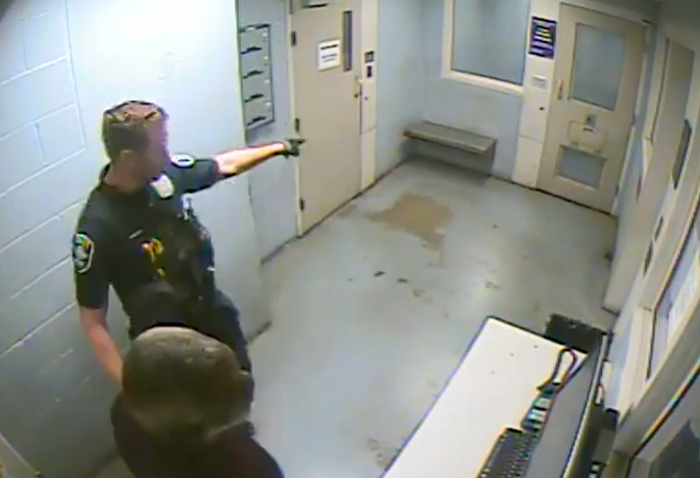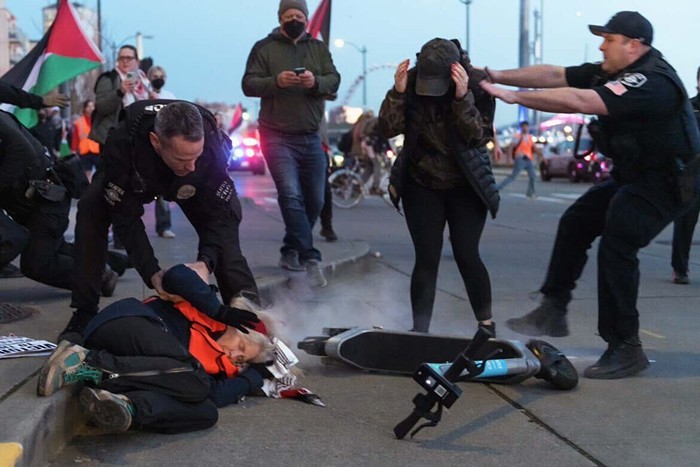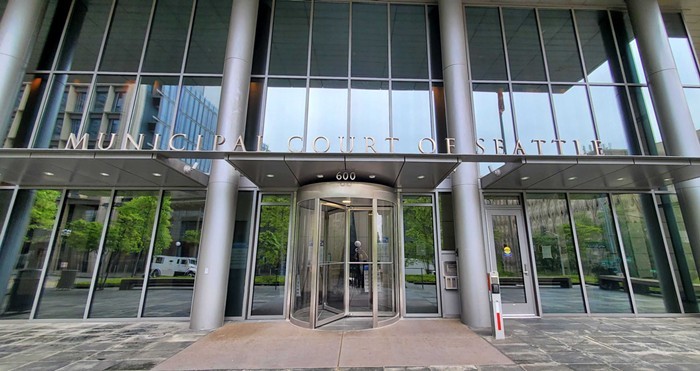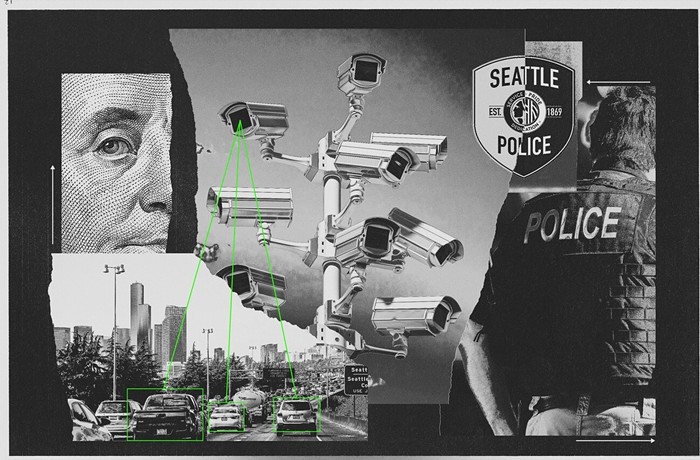As of the end of October, the Seattle Police Department's crime dashboard shows reports of crime downtown have fallen to nearly half of what they were at the start of 2022. Over the same period, however, reports of crime have remained relatively steady in the areas surrounding what SPD calls the Downtown Commercial neighborhood.
How has the City been so successful in reducing crime in this one neighborhood without that success bleeding over into Belltown, Pioneer Square, or the Chinatown-International District? And are they actually reducing crime, or merely pushing it out of downtown and into the surrounding neighborhoods? The answers to those questions depend on who you ask in City Hall.
The Mayor's Office Credits the Cops
In an email, a spokesperson for Mayor Harrell noted that there are "a number of intersecting issues" likely influencing the reduction in crime downtown. The policies the spokesperson listed as contributing, however, almost all involved either law enforcement or promoting business interests in the neighborhood.
Despite "limited staffing," the spokesperson credited SPD's increased presence as seen through additional cops on the street and the deployment of a mobile precinct as ways that the cops have likely deterred some amount of crime. Through emphasis patrols, where the department identifies so-called "hot spots" of criminal activity and increases the police presence in those areas, the Mayor's spokesperson argued that the mere visibility of officers in the downtown core has been the biggest differentiating factor in how the City has addressed crime in that neighborhood specifically compared to the surrounding areas.
All of that additional law enforcement presence isn't just for show, however. The Mayor's spokesperson pointed out that the emphasis patrols have led to "meaningful felony arrests" of people selling drugs and committing retail theft. But since King County's attempts to bust up organized retail theft rings have largely only bagged the replaceable foot soldiers of those operations, it seems unlikely that pure law-and-order policy has driven the decrease in reported crime.
To the Mayor's credit, his office recognizes that there are other factors influencing the reduction of crime that are unique to downtown. His spokesperson identified the resurgence of foot traffic to the retail core's brick-and-mortar shops, driven in part by policies meant to encourage small businesses to open locations in previously boarded-up storefronts like Seattle Restored, as another potential reason that crime has fallen more downtown than in the surrounding neighborhoods.
Research shows that increased foot traffic itself reduces crime, so expanding the reach of those programs beyond downtown could help drive similar reductions in reported crime in those neighborhoods as well.
Finally, the Mayor's spokesperson gave a token acknowledgment of the work done by service providers to connect people with "intensive case management" in the area, but did not offer any credit to specific programs or organizations doing that work.
Council Members Offer Skepticism of Emphasis Patrols
In contrast to the Mayor's focus on law enforcement, Council Members Andrew Lewis and Lisa Herbold each assigned the lion's share of the credit for the reduction in crime downtown to the work of service providers like LEAD or REACH helping people meet their basic needs. In their view, the crime reduction comes from fewer people struggling with untreated behavioral health issues or needing to steal to survive.
In a phone interview, Lewis, who represents downtown, did give some credit to SPD's emphasis patrols for deterring the violent crime that frequently accompanies areas with a high concentration of drug trafficking. But unlike the Mayor's Office, he identified specific programs aimed at reducing poverty and getting people health care as responsible for the decline in property crime and illicit drug use.
In Lewis's opinion, the success of Community Court, which helps people who commit low-level offenses get connected with anti-poverty programs and medical treatment, has played a key role in reducing crime. By addressing the root causes of their criminal activity, the therapeutic court keeps people from cycling in and out of jail and ending up back on the street committing more crime where they were arrested in the first place.
Lewis also pointed to the success of JustCARE and its non-cop security team in "resolving" several homeless encampments downtown. The service providers "resolved the encampments through sustained outreach over several weeks and found people housing that meets their needs." Unlike the City's typical approach to sweeping encampments that merely shove unhoused people around to other neighborhoods, Lewis said the holistic strategy of sustained outreach has made a lasting change downtown because people JustCARE serves are no longer driven to commit crime in order to eat or afford shelter.
Herbold, who chairs the Council's Public Safety committee, also expressed skepticism of the effectiveness of emphasis patrols. In an email, she pointed to the previous failures of the 9½ Block Strategy under Mayor Ed Murray, which did drive down narcotics activity downtown but coincided with spikes in drug crimes in adjacent neighborhoods. Criminologists call this effect "displacement" of crime rather than an actual reduction in crime, and Herbold pointed out that the City needs to do more to pair SPD's emphasis patrols with a corresponding investment in services for people who resort to theft and drug use out of desperation and extreme poverty.
She specifically called out LEAD, which the City Council failed to fully fund in its budget, as an outreach organization that has shown significant success in keeping its clients from committing additional crimes once cops refer people to the diversion program.
Herbold also claimed credit for requesting in March that the Mayor's Office tap We Deliver Care, the non-cop security team that worked with JustCARE to get unhoused people off the street and into hotel rooms, to supplement the cops' emphasis patrols. Starting last month, the Mayor's Office is finally deploying We Deliver Care teams to Third Avenue to function as civilian emphasis patrols, which could help sustain the reduction in crime downtown through the end of the year.
In an interview, LEAD's senior project manager Samuel Wolff agreed with Herbold's diagnosis of emphasis patrols leading to displacement rather than a true reduction of crime. While his organization doesn't have the same breadth of data as the cops, he noted that LEAD's caseworkers have reported finding their clients who used to spend much of their time downtown in other surrounding neighborhoods.
Although LEAD's clients show a significantly reduced recidivism rate once enrolled in the program, and therefore aren't the best measure of where crime is concentrated in the city, the anecdotal evidence of unhoused people struggling with extreme poverty or behavioral health issues getting pushed into the surrounding neighborhoods does match the trends shown in SPD's data.
As everyone I spoke with for this story acknowledged, finding the single policy or program responsible for driving the bulk of the reduction in crime downtown is, frankly, impossible.
But since competing strategies for providing public safety beyond the downtown retail core will likely be the focus of next year's City Council elections, it's worth noting which of these competing explanations offers a solution that's actually scalable. With the Mayor and City Council agreeing on a budget that projects adding just 15 officers to SPD's ranks next year, any candidate who pushes a platform reliant on projecting a similar level of police presence citywide as we've seen downtown this year simply isn't living in reality.




















